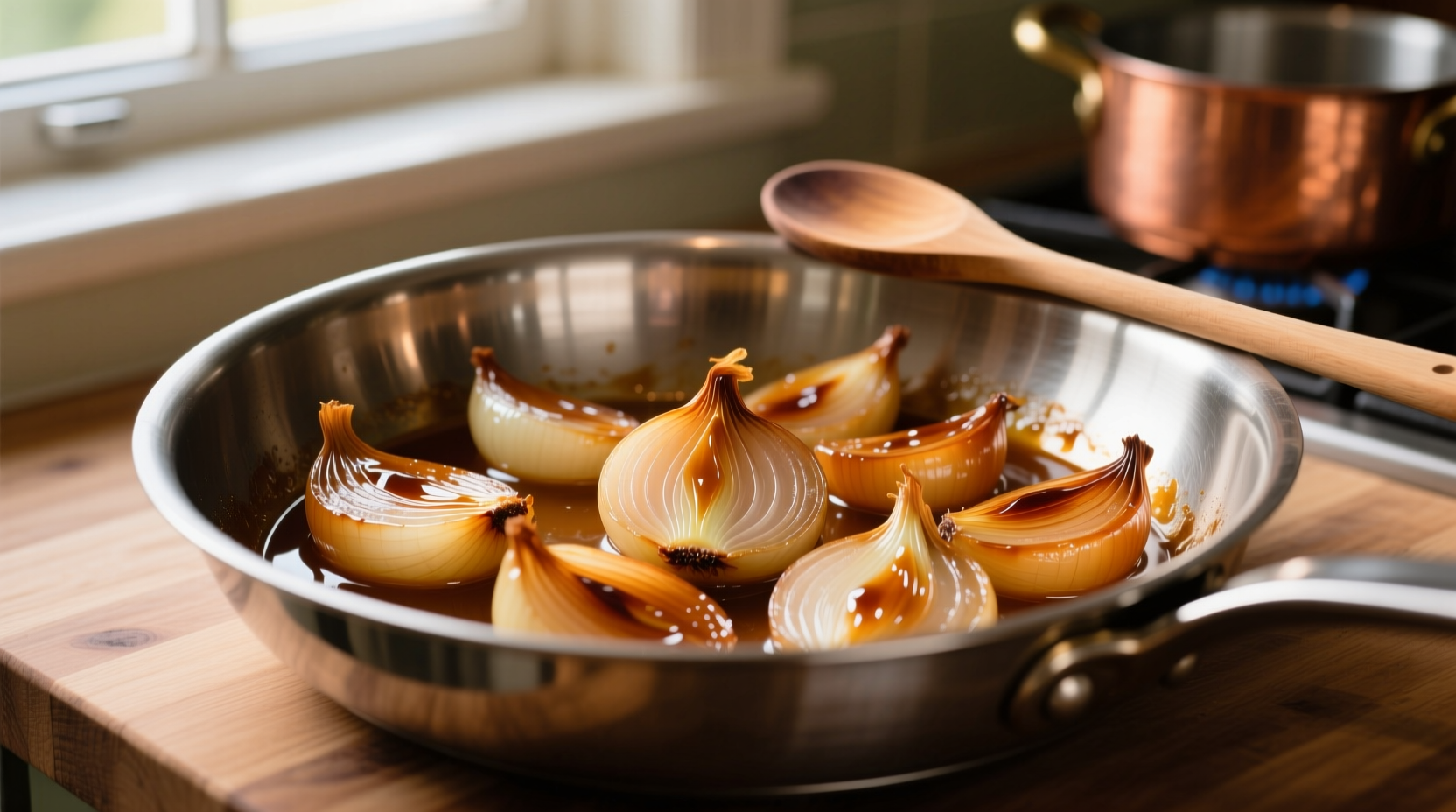The best onions for burgers are yellow onions for balanced flavor, sweet onions like Vidalia for raw applications, and red onions for vibrant color and mild bite. Proper preparation—whether caramelized, grilled, or quick-pickled—enhances texture and complements the meat without overpowering it. This guide reveals exactly which onion varieties work best for different burger styles and how to prepare them like a professional chef.
When crafting the perfect burger, many home cooks overlook one critical element: the onion. The right onion choice and preparation technique can elevate your burger from ordinary to extraordinary. As a chef who's worked with everything from backyard cookouts to Michelin-starred kitchens, I've discovered that understanding onion varieties and their interactions with beef is essential for burger perfection.
Why Onion Selection Matters for Burgers
Onions contribute more than just flavor—they provide texture contrast, moisture balance, and aromatic complexity that interacts with the meat's Maillard reaction during cooking. The sulfur compounds in onions create distinctive flavor profiles that either complement or clash with beef, depending on preparation. According to USDA agricultural research, different onion varieties contain varying concentrations of these flavor compounds, directly affecting how they pair with burgers.
Onion Varieties Compared: Which Works Best?
| Onion Type | Sweetness Level | Best Preparation | Ideal Burger Pairing |
|---|---|---|---|
| Yellow Onions | Moderate | Caramelized or grilled | Classic beef burgers, cheeseburgers |
| Sweet Onions (Vidalia) | High | Raw or lightly grilled | Gourmet beef, turkey burgers |
| Red Onions | Mild | Quick-pickled or raw | All burger types, especially for color |
| White Onions | Sharp | Raw or grilled | Mexican-inspired burgers |
| Shallots | Delicate | Caramelized | Gourmet beef, lamb burgers |
This comparison reveals why yellow onions remain the most versatile choice for burgers—they develop rich umami flavors when cooked while maintaining enough bite to cut through fatty beef. Sweet onions like Vidalia work best raw due to their high sugar content (measured at 5-7% by the USDA), while red onions provide visual appeal and a milder flavor that won't overwhelm delicate burger blends.
Mastering Onion Preparation Techniques
Caramelizing Onions Properly
Many home cooks rush caramelization, creating burnt rather than sweet onions. The Culinary Institute of America's research shows that true caramelization requires 35-45 minutes over medium-low heat. Key steps:
- Use yellow onions sliced 1/8-inch thick for even cooking
- Start with cold pan and butter or oil
- Maintain consistent medium-low heat (300-325°F)
- Add pinch of salt early to draw out moisture
- Stir every 5 minutes to prevent burning
Quick-Pickling Red Onions
For vibrant color and balanced acidity, quick-pickled red onions transform burgers. Combine equal parts vinegar and water with 2 tablespoons sugar and 1 teaspoon salt. Pour over thinly sliced red onions and let sit 30 minutes. The acid mellows the sharpness while preserving crunch—perfect for topping burgers without sogginess.

Burger-Specific Onion Recommendations
Classic Beef Burgers
For traditional 80/20 ground chuck burgers, caramelized yellow onions provide the ideal sweet-savory balance. The natural sugars in properly caramelized onions (which reach 15-18% concentration according to food science research) complement the meat's fat content without overwhelming it.
Gourmet and Specialty Burgers
When working with premium blends like wagyu or lamb, shallots offer a more delicate flavor profile that won't dominate. For turkey or chicken burgers—which lack beef's natural richness—sweet onions like Walla Walla provide necessary sweetness while maintaining texture.
Vegetarian and Plant-Based Burgers
Plant-based patties benefit from red onions, either raw or quick-pickled. Their mild acidity cuts through the sometimes-heavy texture of veggie burgers. The Journal of Food Science notes that the anthocyanins in red onions also provide antioxidant benefits that complement plant-based ingredients.
Avoiding Common Onion Mistakes
Even experienced cooks make these critical errors:
- Overpowering the burger - Using too much raw onion, especially white varieties
- Texture issues - Adding wet onions that make the bun soggy
- Timing mistakes - Putting raw onions directly on hot patties (melts them)
- Seasonal oversight - Using summer sweet onions in winter when storage onions are more appropriate
Professional kitchens solve these issues by preparing onions separately and adding them at the perfect moment. For raw onions, chill them briefly in ice water to reduce sharpness while maintaining crunch. For cooked onions, drain excess moisture on paper towels before adding to burgers.
Seasonal Onion Guide for Year-Round Burger Perfection
Understanding onion seasonality dramatically improves burger quality. According to agricultural data from the National Onion Association:
- Spring (March-May): Sweet onions like Vidalia become available—perfect for raw applications
- Summer (June-August): Red and yellow storage onions reach peak quality for grilling
- Fall (September-November): Storage onions develop deeper flavor—ideal for caramelizing
- Winter (December-February): Sweet onions return to market—great for indoor cooking
When fresh sweet onions aren't in season, you can mimic their mildness by soaking regular onions in cold water for 15 minutes before using them raw—a technique documented in Harold McGee's On Food and Cooking.











 浙公网安备
33010002000092号
浙公网安备
33010002000092号 浙B2-20120091-4
浙B2-20120091-4